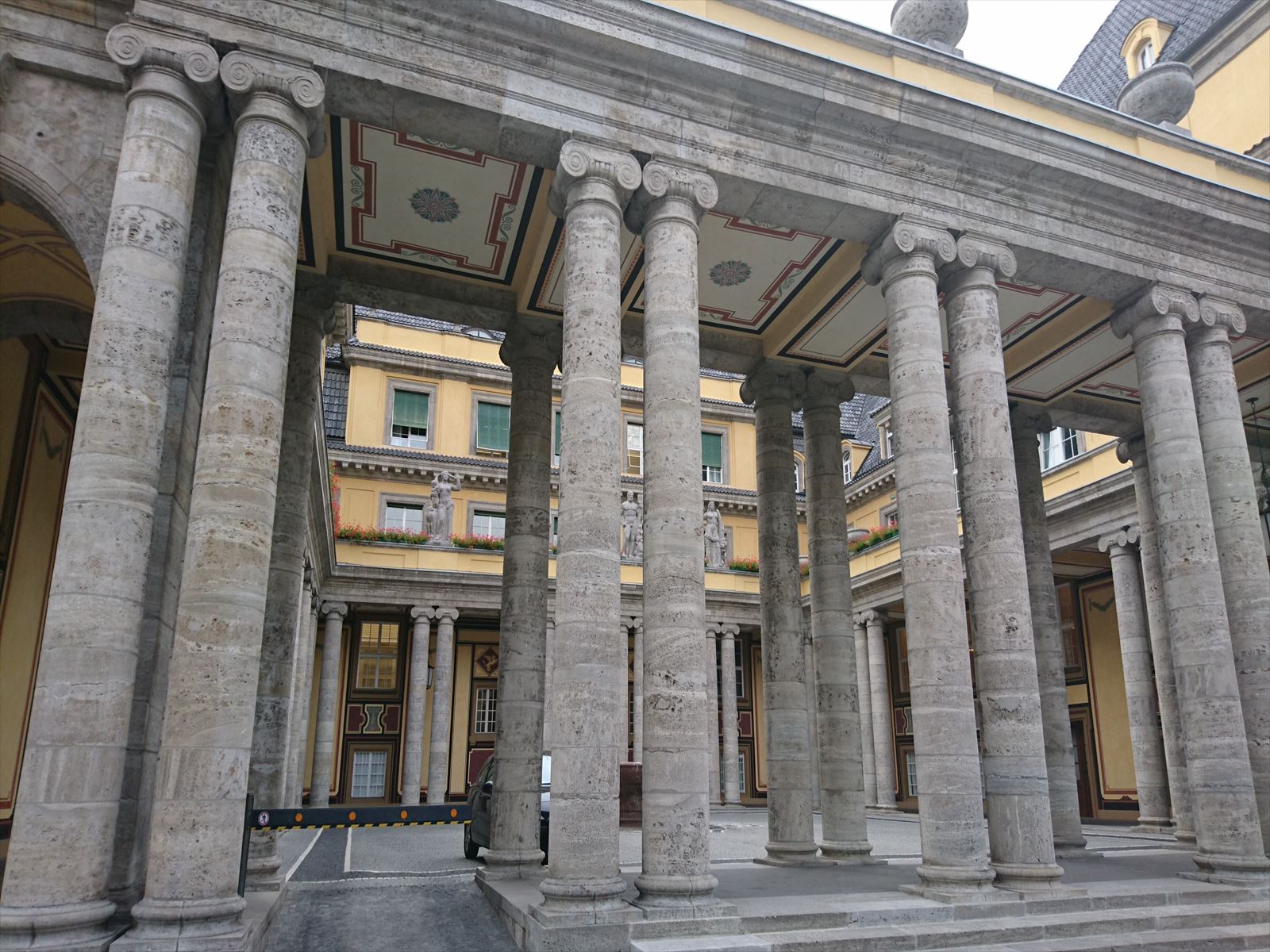キャプティブ 2020.09.19
CA 18 キャプティブのリスクヘッジ(再々保険)Captive Risk Hedging (Retrocession)
目次
Copyright © Shinichiro Hatani 2020 All rights reserved
For those who prefer to read this column in English, the Japanese text is followed by a British English translation, so please scroll down to the bottom of the Japanese text.
海外に設立するキャプティブは、日本の保険業法の定めにより、「日本に支店等を設けない外国保険業者」になり、その場合日本に所在するあらゆる人、財産等にかかわる保険契約を締結できない。そのため、キャプティブは日本の保険会社を元受保険会社として、キャプティブの親会社はその元受保険会社で保険を掛け、その元受保険会社が、一旦引き受けたリスクをキャプティブと再保険契約を締結してキャプティブに再保険を出す形態のキャプティブ、「再保険キャプティブ」が日本企業の有するキャプティブとしては一般的な形態となる。
この再保険とは、「保険会社が引き受けた責任の一部または全部を他の保険会社に移転すること」であり、「保険を再度掛けること」から「再保険」と呼称される。したがって、リスクマネジメントの観点からキャプティブを設立する際に最も重要な要素は、日本のキャプティブの親会社また元受保険会社の視点からは「再々保険」となる「キャプティブからの再保険の手配」である。
キャプティブが自らの再保険を手配できていない場合、リスクはすべてキャプティブに残ることになるからである。

1.再保険の種類
この再保険を「契約方法」、「責任分担方法」、それぞれによって分類すると以下の通りとなる。
A. 契約方法
1. 特約再保険(Treaty Reinsurance:通称「トゥリーティ」、[特約])
元受保険会社と再保険会社があらかじめ取引、契約条件を定めて「一定の条件に合致する案件はすべて再保険の対象とする方式」であり、保険会社経営では「保険引受の土台となる仕組み」となるものである。この特約再保険によってリスク分散されることを前提にして、損害保険会社は保険の引き受けをおこなうことができるからである。特約再保険の契約開始日は日本の保険会社の会計年度に合わせて毎年4月1日更改が一般的である。
2.任意再保険(Facultative Reinsurance:通称「ファカル」、「任再」)
元受保険会社と再保険会社が「案件毎に個別に引受の可否を含めて契約条件の交渉、決定をおこなう方式」である。保険会社が保険を引き受けることができるのは、特約再保険の存在があるからであるが、その特約再保険ではカバーできないリスクを引き受ける場合、国内外の再保険会社とこの任意再保険を交わして元受保険会社は保険を引き受ける。
キャプティブが日本の元受保険会社から再保険を引受ける方式もこの任意再保険となる。
B. 責任分担方式
1. 比例(プロポーショナル)再保険
再保険契約の責任分担額を「割合」で決定する方式である。英文名ではProportional(プロポーショナル)再保険であるが、実務的には「割合」を意味する「Quota」という言葉から、 「Quota Share(クオータシェア)(再保険)」と呼ばれるのが一般的である。
2. 非比例(ノンプロポーショナル)再保険
再保険契約の責任分担額を「支払う損害保険金額」をもとに決める方式である。「再保険金を支払うか否か決める金額(再保険契約上の免責金額)をExcess (of Loss) Point(エクセス(オブ・ロス)ポイント)」(Excess金額以下の場合は再保険金の支払いが発生しない)と実態を表す言葉を使って言うため、この非比例再保険も「Excess Cover(エクセスカバー)」と一般的には呼ばれている。
2.キャプティブに使われる一般的な再保険の方式
元受保険会社から、再保険会社としてのキャプティブへ再保険を出すことを「出再(しゅっさい)」という。また、再保険会社としてのキャプティブから、再々保険会社であるロンドン保険市場等海外の再保険会社に出す再々保険も、前述のとおり、通常は「任意再保険」の形態で、責任分担としては「比例再保険」でおこなわれることが一般的である。再々保険の英文名はRetrocession(レトロセッション)であり、一般的には「レトロ」と呼称される。
また、この場合、元受保険会社からキャプティブへの再保険に関する保険料と(支払い)保険金は次のとおりとなる。「再保険料=元受保険料×出再の割合(%)」、「再保険金=元受保険金×出再割合(%)」である。
損害保険契約には、通常「免責金額」(「この金額までの損害が発生しても保険金は支払わない」という、小損害を保険の対象から外す約定金額)が付帯されるため、保険金はこの免責金額を超える損害が発生した場合に支払われるが、その支払い金額は「適用される免責金額の定義」により:
①免責金額が控除された補償金額(保険金)となる場合。
②免責金額を超えた場合、損害額の全額が補償金額(保険金)となる。
この2種類に分けられるが、キャプティブへの再保険、またキャプティブからの再保険(元受保険会社から見れば再々保険)では①が約定されることが一般的である。
その理由としては、「再保険にさらに再々保険を組み合わせたものがキャプティブのプログラム」であるため小損害を対象から外すことによりプログラムを簡便化して、「企業の経営にダメージを与えるような大損害への防衛手段」としてのキャプティブの効用を最大限にするためである。
3.大規模なキャプティブに使われる再保険の方式
巨大グローバル企業で設立される大規模なキャプティブの場合は、前述のQuota Share(クオータシェア)の形式に加え、支払う損害保険金額によって責任分担額を決める「非比例(ノンプロポーショナル)再保険」、Excess (of Loss)Cover(エクセス(オブ・ロス)カバー)が組み合わされることが一般的である。
6月15日、本コラムの「キャプティブ17」で記した、米国を代表する大手化学品メーカーを中心とした34社によってバミューダに設立されたキャプティブ、American Casualty Excess Insurance Company Ltd.は(ACE)は、その名のとおり、Excess(エクセス:損害保険において損害額が「免責金額」を超えた場合に、その超過した損害額のみ補償する方式)を引き受けるキャプティブであったが、米国を代表する蒼々たる企業が設立したため、そのExcess (of Loss) Point(エクセス(オブ・ロス)ポイント)の金額は、なんと1億ドル(約110億円)であり、Quota Share(クオータシェア)再保険とExcess (of Loss)Cover(エクセス(オブ・ロス)カバー)他、複雑な構造の再保険手配になっていた。

今回のまとめ
キャプティブは元受保険会社から再保険を引き受ける、「保険会社」である。保険会社は、世の中のリスクが流れ込む「リスクの坩堝(るつぼ)」である。キャプティブを設立しておいて、キャプティブのリスクマネジメントを考えなければどうなるであろうか。自明の理である。
グローバル・リンクが「ソリューション・キャプティブ®︎」の意義を強く提唱するまで、適格と考えることが困難なキャプティブ、「ただの貯金箱=ただのリスクの塊」としか考えられないものが幾つつくられたことか。再保険手配の手続きはおろか、再保険手配の必要性さえ伝えない、伝えることができない、再保険市場を全く知らないキャプティブのプレイヤーが跳梁跋扈していたためである。
弊社の法務顧問であった志賀櫻弁護士はこういう事態を苦々しく思い、常々「キャプティブを所有する最大の意義はリスクマネジメントが自社の手でできるようになること、そう私は最高裁への鑑定意見書に記し、最高裁は採用したのだ」と強く仰っていた。
キャプティブを設立するのであれば、キャプティブが破綻していずれ大きな問題とならないように、キャプティブに関しても十分なリスクマネジメントをおこない、キャプティブから十分な再保険(再々保険)の手配をおこなわれることを、キャプティブに関わる人間として切に望むものである。
執筆・翻訳者:羽谷 信一郎
English Translation
Copyright © Shinichiro Hatani 2020 All rights reserved
Captive 18 – Captive Risk Hedging (Retrocession)
Under Japan’s Insurance Business Act, a captive established abroad is a “foreign insurance carrier without a branch or other presence in Japan” and, as such, cannot enter into insurance contracts involving any person or property located in Japan. As a result, the captive’s parent company will insure its risks with the primary insurer, and the primary insurer will enter into a reinsurance agreement with the captive to re-insure the risks it has assumed. This “Reinsurance Captive” is a common form of captives owned by Japanese companies.
This reinsurance is defined as “transferring all or part of the liability assumed by an insurance company to another insurance company” and is called “reinsurance” because it means “to re-insure”. Therefore, the most important factor in establishing a captive from a risk management perspective is “arranging for reinsurance, as retrocession from the point of view of a Japanese captive’s parent or primary insurer, from the captive”.
This is because if a captive fails to arrange its own reinsurance, all risk remains with the captive.
1. Types of reinsurance
This reinsurance can be categorized by “contract method” and “method of allocation of responsibility”, respectively, as follows.
A. Method of Contracting
1. Treaty Reinsurance (Treaty Reinsurance:commonly known as “TREATY”)
The primary insurer and the reinsurer agree on the terms and conditions of the contract beforehand, and then “all risks that meet certain conditions are subject to reinsurance”, which in the management of an insurance company is the foundation of its underwriting system. This is because non-life insurers are able to underwrite insurance on the assumption that risk is diversified by the reinsurance clause.
The contract renewal date of the reinsurance treaty is generally April 1 of each year, in line with the Japanese insurance company’s fiscal year.
2. Voluntary Reinsurance (Facultative Reinsurance: commonly known as “FACUL”)
Under this system, the primary insurer and the reinsurer negotiate and decide on the terms and conditions of the contract, including the acceptance or rejection of underwriting on a case-by-case basis.
An insurance company can underwrite insurance because of the existence of treaty reinsurance, but if it underwrites risks that are not covered by the treaty reinsurance, the insurer will underwrite insurance through this facultative reinsurance arrangement with a domestic or foreign reinsurer.
The method in which a captive underwrites reinsurance from a Japanese primary insurance company is also a facultative reinsurance scheme.
1. Proportional Reinsurance
This is a method of determining the amount of liability sharing in reinsurance contracts on a “proportional” basis. In English, it is called “proportional reinsurance”, but in practice it is more commonly referred to as “quota share”, after the word “quota”, which means “proportional”.
2. Non-proportional Reinsurance
This is a method of determining the amount of liability sharing in a reinsurance contract based on the “amount of damage insurance to be paid”. This non-proportional reinsurance is also commonly referred to as “Excess Cover” because the amount of liability to be paid (the deductible under the reinsurance contract) is referred to as the “Excess (of Loss) Point” (if the amount is less than the Excess amount, no reinsurance payment will be made) to show the reality.
2. Common reinsurance methods used for captives
Reinsurance from a primary insurer to a captive as a reinsurer is referred to as “ceding”. Reinsurance from a captive as a reinsurer to an overseas reinsurer such as the London Insurance Market is, as mentioned above, usually done as a voluntary reinsurance, with a proportional reinsurance sharing of responsibility. Its English name is “retrocession” and it is commonly referred to as “retro”.
In this case, the premiums and (payout) benefits for reinsurance from the primary insurer to the captive are as follows “Reinsurance premiums = primary premiums x percentage of ceded reinsurance (%)” and “Reinsurance claims = primary claims x percentage of ceded reinsurance (%)”.
Usually, a “deductible” (a stipulation that excludes small losses from the insurance coverage, which states that the insurance company will not pay out even if there is a loss up to this amount) is attached to the non-life insurance policies, so the insurance benefit is paid when the loss exceeds the deductible.The amount of that payment depends on the “definition of the applicable exclusion amount”:.
① When the deductible is deducted from the amount of compensation (insurance money).
② If the deductible is exceeded, the full amount of the loss will be the amount of coverage (insurance money).
Although there are two types, it is common for① to be written for reinsurance to and from a captive (or retrocession from the perspective of the primary insurer).
The reason for this is that “the captive program is a combination of retrocession in addition to reinsurance” and therefore, by excluding small losses from the program, the program can be simplified to maximize the effectiveness of the captive as a “defense against large losses that could damage the company’s business”.
3. Reinsurance methods used for large captives
Large captives established by large global corporations usually combine the aforementioned quota share format with “non-proportional reinsurance,” or excess (of loss) cover, in which the amount of liability shared is determined by the amount of property and casualty insurance paid.
The captive, American Casualty Excess Insurance Company Ltd. (ACE), which was established in Bermuda by 34 leading U.S. chemical companies and other leading chemical manufacturers, which I wrote about in this column, “Captive 17,” on June 15, is, because the leading U.S. company established the Excess (of Loss) Point, a captive that underwrites Excess (a method of indemnifying only the excess of losses in excess of the “deductible” in property and casualty insurance).The company was a captive that underwrote Excess (a method of compensating only the excess amount of loss over the deductible in property insurance).
Because it was established by gigantic companies that represent the United States, its Excess (of Loss) Point is worth a whopping $100 million (approximately 11 billion yen). Quota Share reinsurance and Excess (of Loss) Cover and other complexly structured reinsurance arrangements were in place.
Summary of this issue
Captives are “insurance companies” that underwrite reinsurance from primary insurers. An insurance company is “the crucible into which the risks of the world flow”. What would happen if a captive was established and the captive’s risk management was not considered? It is self-evident.
How many captives were created that were difficult to consider eligible until Global Link strongly advocated the significance of a captive with a qualified retrocession arrangement, a “solution captive®,” and what can only be considered “just a piggy bank = just a bunch of risk”? This is because there was a rash of captive players who were completely ignorant of the reinsurance market, who would not or could not even communicate the need to arrange reinsurance, let alone the procedures for arranging reinsurance.
Our legal counsel, attorney Sakura Shiga, bitterly felt this situation, and always strongly stated that “the greatest significance of owning a captive is to be able to perform risk management by one’s own hands, which I wrote in my opinion to the Supreme Court, and the Supreme Court adopted it”.
If a captive is to be established, it is my sincere hope, as someone involved with the captive, that sufficient risk management will be carried out with respect to the captive and sufficient reinsurance(retrocession) arrangements will be made by the captive to ensure that the captive does not fail and eventually become a major problem.
Author/translator: Shinichiro Hatani

